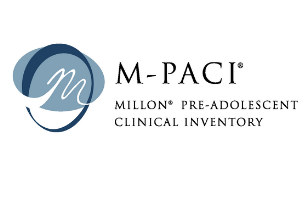Author:
Theodore Millon, PhD, DSc, Robert Tringone, PhD, Carrie Millon, PhD, Seth Grossman, PsyD
Overview:
Brief assessment of personality characteristics in troubled pre-adolescents
Age Range:
9 – 12
Administration:
Paper-and-pencil, CD, computer or online administration
Scoring Option:
Q-global™ web-based, Q™ Local Software, Manual scoring, or Mail-in Scoring Service
Reading Level:
3rd Grade
Completion Time:
15–20 minutes (97 true/false items)
Scores/Interpretation:
A sample of 292 pre-adolescents, ages 9-12, from 53 sites from across the U.S.
Report Options:
Interpretive and Profile Reports
Publication Date:
2005
Every child deserves to enjoy youth to the fullest. But for some young people, psychological problems can stand in the way—and these difficulties may take root long before the “troubled teens.” As a professional who works with children daily, you know first-hand the challenges some preteens face. And, we know the challenges you may face in pinpointing the source of pre-adolescent issues.
Now, there’s a comprehensive tool specifically designed to help you quickly and accurately identify psychological problems in children ages 9–12: the Millon®; Pre-Adolescent Clinical Inventory (M-PACI®). Unlike instruments that focus on a single clinical area such as anxiety or depression, the M-PACI assessment provides an integrated view that synthesizes the child’s emerging personality styles and clinical syndromes, helping clinicians detect early signs of Axis I and Axis II disorders.
Effective and efficient, the M-PACI can help you arrange early intervention on difficulties that may keep students from making the most of their preteen years—and these, if left undetected, can lead to bigger heartaches down the road.
How to Use This Test
The M-PACI is used for pre-adolescent assessment in outpatient, inpatient, day treatment, and residential treatment settings. Psychologists, psychiatrists, school psychologists, counselors, juvenile justice professionals, and other mental health professionals can use M-PACI results to help:
- Evaluate troubled pre-adolescents to confirm diagnostic hypotheses
- Contribute to individualized treatment planning by providing an integrated picture of emerging personality patterns and current clinical signs
- Measure progress before, during, and after treatment
Key Features
- Contains fewer than 100 questions and takes most pre-adolescents only 15–20 minutes to complete.
- Uses age-appropriate language and requires minimal reading level.
- Validated against expert clinician judgments and other leading self-report inventories for this age group.
- Developed by Dr. Theodore Millon, a leader in the field of personality development.
- A summary of potential treatment strategies, tailored to each patient, is provided in the M-PACI interpretive report. This information can help clinicians decide which issues to focus on during treatment and how to address them with the patient.
Emerging Personality Patterns
| 1. |
Confident |
| 2. |
Outgoing |
| 3. |
Conforming |
| 4. |
Submissive |
| 5. |
Inhibited |
| 6. |
Unruly |
| 7. |
Unstable |
Current Clinical Signs
| A. |
Anxiety/Fears |
| B. |
Attention Deficits |
| C. |
Obsessions/Compulsions |
| D. |
Conduct Problems |
| E. |
Disruptive Behaviors |
| F. |
Depressive Moods |
| G. |
Reality Distortions |
Response Validity Indicators
| IV |
Invalidity |
| RN |
Response Negativity |
The normative population of the M-PACI consists of 292 pre-adolescents, ages 9–12, from 53 sites from across the U.S. These sites included private practices, residential treatment facilities, public mental health centers and family guidance clinics, and other types of settings.
Report Options
Interpretive Report
Provides an integrated analysis of results with regard to the patient’s emerging personality patterns and current clinical signs. Noteworthy Responses help provide clues for follow-up interviews based on individual item responses. The interpretive report also lists recommended treatment strategies tailored to each patient. Suggested treatment approaches are based on the test-taker’s emerging personality patterns and current clinical signs. The report also includes a profile of base rate scores for the scales.
View a sample M-PACI Interpretive Report.
Profile Report
Presents a graphic representation of base rate scores for all 14 scales and two response validity indicators in an easy-to-read graph. As with the interpretive report, this report can help give administrators a picture of the individual’s personality and behavioral concerns.
View a sample M-PACI Profile Report.
Scoring and/or Reporting Options
Q-global™ Web-based – Enables you to quickly assess and efficiently organize examinee information, generate scores, and produce accurate comprehensive reports all via the Web.
Q Local™ Software – Enables you to score assessments, report results, and store and export data on your computer.
Mail-in Scoring – Specially designed answer sheets are mailed to Pearson for processing within 24–48 hours of receipt; results returned via regular mail.
Free Online Introductory Training Programs
This independent study training program provides an overview of the MACI and M-PACI. Five lectures presented by co-author Dr. Seth Grossman provide an introduction to the M-PACI, its features, scales, and interpretation guidance.
Earn up to 3 APA CE credits! (Nominal fee applies)
Modules contain documents under the “Attachments” tab that can be used to obtain CE credit. To apply for CE credits, scan and email the completed learning assessments and course evaluation form to CEAdmin@Pearson.com.
Getting Started with the Q-global Training Series
View these brief training modules about Q-global:
Questions
Frequently asked questions follow. Click on a question to see the response.
Test Content
-
What is the reading level of the M-PACI items?
-
Is the M-PACI inventory appropriate for use with non-clinical cases?
-
Can the M-PACI inventory be used in school settings?
-
Can the M-PACI inventory be used with children younger than 9 or older than 12?
-
Is the M-PACI inventory available in any languages other than English?
Administration
Scoring







